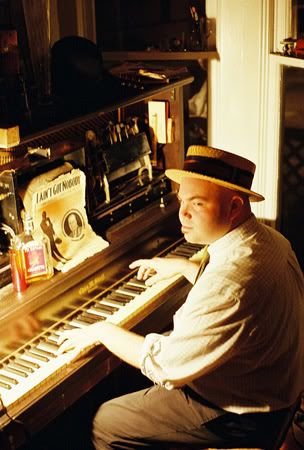Myth 1: doorknobs in old (read pre-1900) homes are lower than they are today.
Myth 1 debunked: Women generally regarded flailing their arms above their heads to be declasse. Most of those doorknobs are set at a height that didn't require the average size human to lift their arm more than at the wrist.
Myth 2: Beds were shorter because people were shorter.
Myth 2 debunked: Before 1900, healthcare was still very haphazard. If you are like I am and suffer from allergies, then you are probably familiar with having to sleep in a semi-upright position. It was considered healthful to sleep sitting up, hence things like HEADBOARDS and WINGBACK CHAIRS, both things designed to aid in sleeping in a semi-reclined position.
Myth 3: Healthcare wasn't as good so people didn't grow as big.
Myth 3 debunked: Partially correct, healthcare was hit-or-miss. But, the truth is that good health care doesn't make people grow taller. Food doesn't really either, that's an excuse that your parents were passed down to help encourage you to eat your greens. Enriched food does help you to grow fat though and probably aids in the development of various cancers in your body.
Oh and just one more myth thrown in there while I'm on a tirade:
Myth X: Cancer is a modern disease.
Myth X debunked: Cancer is a mistake that your cells make in your body. It is a horridbut natural occurence. Cancer has always been around, humans and science just couldn't detect or name it until the twentieth century.
 This photo of an average American family in the 1920's, which according to some experts means that the father measures up to about 4'8" and the young soon is somewhere around 1'8", yeah that sounds about right! (sarcasm hasn't changed much either over the years)
This photo of an average American family in the 1920's, which according to some experts means that the father measures up to about 4'8" and the young soon is somewhere around 1'8", yeah that sounds about right! (sarcasm hasn't changed much either over the years)







